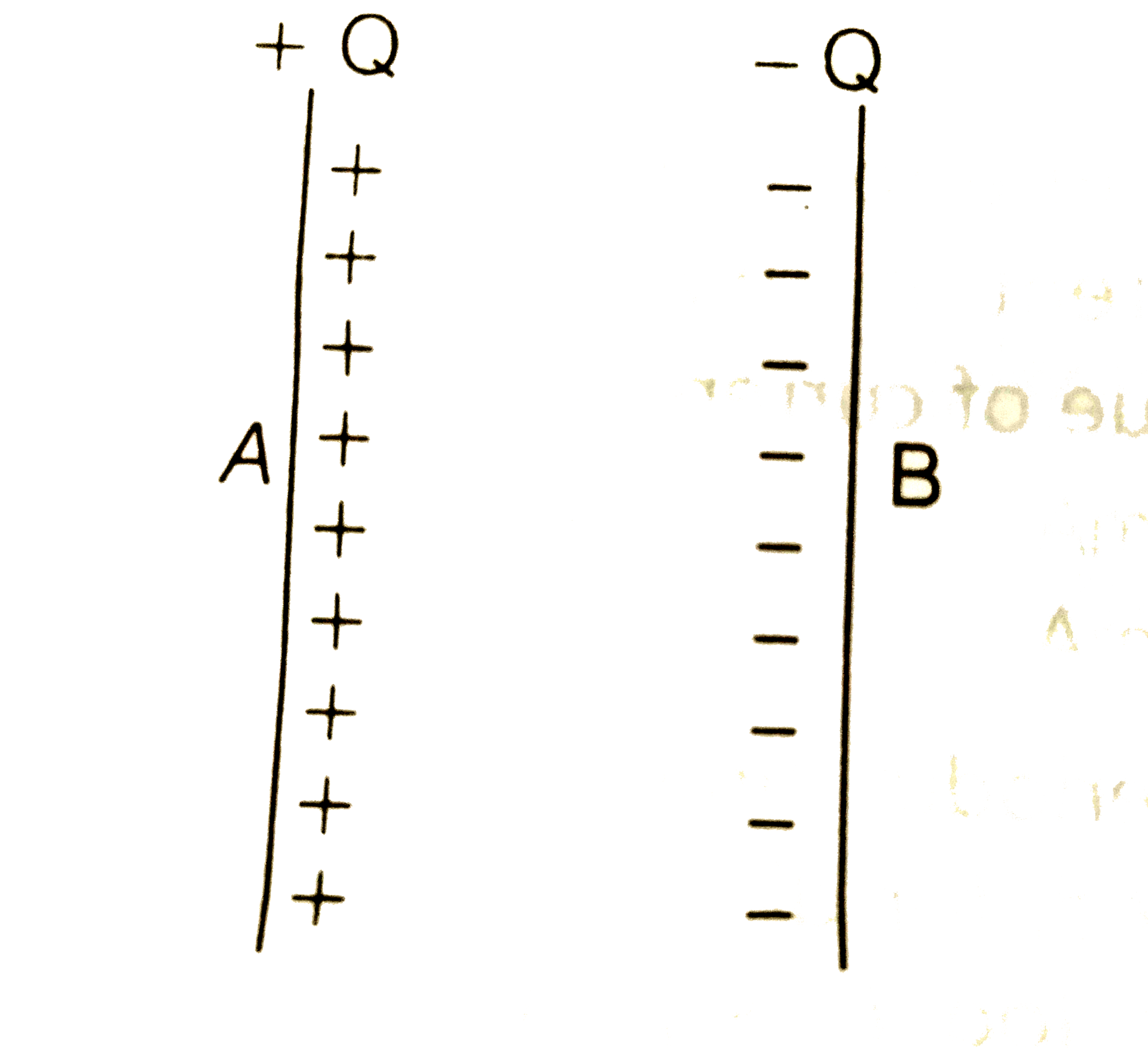The plate A of a parallel plate capacitor is connected to a spring of force constant k and can move, while the plate B is fixed. The arrangement is held between two rigid supports. If a charge +q is placed on plate A and -q on plate B, by how much does the spring elongate?

Force of attraction between the two plates of the capacitors,
F=−kl …………….(1)
If α be the area of two plates and the distance between the plates be x, then capacitance of the capacitor,
C=∈0α2C ..................(2)
We know energy stored in the capacitor,
U=12q2C
From equation (2) we may write,
U=12q2x∈0α
As the electrostatic force(F) is a conservation force, it is equal to the negative gradient of the corresponding potential.
∴F=−dUdx=−ddx(q2x2∈0α)
or, F=−q22∈0α .................(3)
[ negative sign implies that the force is attractive in naure]
So, from equations (1) and (3) we have,
−kl=−q22∈0α
∴l=q22∈0αk.
Topper's Solved these Questions
- CAPACITANCE AND CAPACITORBOOK - CHHAYA PUBLICATIONCHAPTER - CAPACITANCE AND CAPACITOREXERCISE - NCERT TEXTBOOK QUESTIONS
12 Videos
- CAPACITANCE AND CAPACITORBOOK - CHHAYA PUBLICATIONCHAPTER - CAPACITANCE AND CAPACITOREXERCISE - MULTIPLE CHOICE QUESTIONS
29 Videos
- CAPACITANCE AND CAPACITORBOOK - CHHAYA PUBLICATIONCHAPTER - CAPACITANCE AND CAPACITOREXERCISE - SECTION RELATED QUESTIONS
30 Videos
- ATOMIC NUCLEUSBOOK - CHHAYA PUBLICATIONCHAPTER - ATOMIC NUCLEUSEXERCISE - CBSE SCANNER
14 Videos
- COMMUNICATION STSTEMBOOK - CHHAYA PUBLICATIONCHAPTER - COMMUNICATION STSTEMEXERCISE - CBSE SCANNER
28 Videos
Similar Questions
Plate A of parallel plate air filled capacitor is connected to a spring having force constant k and plate B is fixed. They are held on a frictionless table top as shown in Fig. If charge +q is placed on plate A and a charge −q on plate A and a charge −q on plate B, by how much does the spring expand ?

View SolutionPlate A of parallel plate air filled capacitor is connected to a spring having force constant k and plate B is fixed. They are held on a frictionless table top as shown in Fig. If charge +q is placed on plate A and a charge −q on plate A and a charge −q on plate B, by how much does the spring expand ?

View Solution
Knowledge Check
A parallel plate capacitor is connected to a battery and inserted a dielectric plate between the place of plates then which quantity increase
APotential differenceBelectric fieldCstored energyDE.M.F of batteryThe separation between the plates of a charged parallel-plate capacitor is increased. The force between the plates
AincreasesBdecreasesCremains sameDfirst increases then decreasesIn a parallel-plate capacitor of plate area A, plate separation d and charge Q the force of attraction between the plates is F.
AF∝Q2BF∝1ACF∝dDF∝1d
Each plate of a parallel plate capacitor has a charge q on it. The capacitor is now connected to a battery. Now,
View SolutionEach plate of a parallel plate capacitor has a charge q on it. The capacitor is now connected to a battery. Now,
View SolutionThe force between the plates of a parrallel plate air capacitor , if charge on capacitor is Q and area of each palte is A , will be

View SolutionThe separation between the plates of a charged parallel-plate capacitor is increased. The force between the plates
View SolutionImagine a light planet revolving around a very massive star in a circular orbit of radius r with direction T. On what power of r, will the square of time period depends if the gravitational force of attraction between the planet and the star is proportional to r−5/2 .
View Solution
